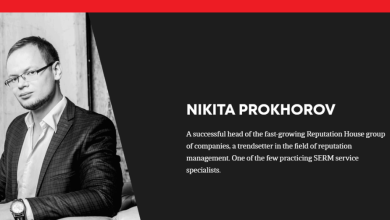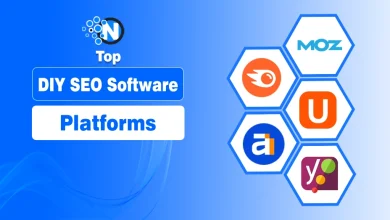The 2025 Guide to SEO That Actually Works: From Google Updates to Content Clusters

Search engine optimization is evolving faster than ever. The fundamentals are still rooted in quality, relevance, and user experience, but the strategies and tactics require more finesse, technical mastery, and agility than in years past.
Getting higher ranks in SERPs now demands a strategy that is not only content-rich but also grounded in real-world expertise and technical precision, partnering with an experienced SEO company. To remain competitive businesses are increasingly relying on professional SEO companies that bring advanced knowledge, innovative tools and in-depth experience.
SEO has outgrown the basic keyword-stuffing tactics of the past. It now requires a comprehensive understanding of algorithms, user intent content structure, and authority building.
In this article, you will find a comprehensive guide to SEO that actually works to help you stay afloat in the strong waves of search engine updates.
Let’s start!
Understanding Google’s March 2025 Core Update
The March 2025 Core Update from Google fundamentally redefined how search engines interpret and rank content. With an increase in SERP volatility over a two-week rollout, this update disrupted long-standing search engine optimization tactics.
It placed a higher emphasis on user intent, experience, and authenticity. Google’s AI-driven algorithm now excels at interpreting the context and value of content rather than relying solely on keyword frequency. This shift requires content creators to focus on crafting meaningful experience-driven narratives that meet genuine user needs.
Guide to SEO in 2025
Here is a complete SEO guide to help you secure higher visibility in search engines:

Embracing the Content Cluster Model
SEO in 2025 prioritizes structured content ecosystems over single, long-form articles. The content cluster strategy has emerged as a superior method for building topical authority. By developing a central pillar page supported by several in-depth subtopics, brands can answer user questions more thoroughly.
These interconnected articles help search engines and users understand the logical relationship between topics, leading to improved engagement and visibility. For instance, a pillar on startup marketing strategies might be reinforced by focused articles on content marketing, social media campaigns, and email automation for entrepreneurs. Each piece reinforces the broader theme, enhancing both discoverability and authority.
<strong>💡<strong><strong>Pro Tip:</strong></strong></strong>
Regularly update your pillar and cluster content with the latest information, trends, and data. Set a reminder to review your main posts at least quarterly.
E-E-A-T Matters More Than Ever
Google now evaluates content through the lens of Experience, Expertise, Authoritativeness, and Trustworthiness, known as E-E-A-T. It’s not enough to write well; the content must demonstrate real-world insight, preferably supported by case studies, project data, and verifiable credentials.
A generic blog post won’t cut it anymore. What matters is showing that the author has actually done the work. This approach not only builds credibility with users but also signals to search engines that your content deserves to rank.
The Rise of AI Overviews
The introduction of Google’s AI Overviews has significantly reshaped the search results page. These AI-generated summaries pull concise answers from various sources, and they often do not rely solely on the top 10 traditional search listings. For smaller or newer websites, this presents a major opportunity to gain visibility by delivering focused high-quality answers.
Structuring content with clear sections, direct responses, and easily digestible language improves the chances of being included in AI Overviews. The goal is to make your content accessible not just to users but also to AI summarization tools.
Technical SEO is a Core Foundation
Despite the shift toward content advancement, technical SEO is as important as ever. Google’s ongoing focus on Core Web Vitals, particularly in mobile-first environments, makes performance a top priority. Fast load times, smooth interactivity, and intuitive mobile navigation are essential for both user satisfaction and search rankings.
Websites that neglect performance optimization risk falling behind no matter how good their content may be. Tasks like image compression, code minification, and server-side improvements are no longer optional they are essential to maintaining competitive visibility.
Aligning SEO with User Intent
Modern SEO goes beyond keywords and into the psychology behind searches. Understanding why users type certain phrases helps create content that meets them at each stage of their journey, whether they’re seeking information, comparing options to buy. Content that matches user intent rather than just exact phrase matches is being rewarded by Google engines.
This increases the significance of semantic SEO since it enables your website to rank for more long-tail keywords and related searches. Analyzing search behavior competitor content, and SERP features offers useful insights into how to position your content effectively.
Leveraging Forum-Style Content for Trust
A noticeable trend in 2025 is the growing appearance of forum-based discussions, such as Reddit threads, in top search results. Users are gravitating toward content that feels authentic, conversational, and grounded in real experience.
This signals an opportunity for marketers to adopt a more genuine tone in their content. Writing as if you’re answering a real question on a forum helps build credibility and fosters engagement. Transparent discussions, complete with limitations and honest recommendations trend to resonate better than polished sales pitches.
Integrating SEO with Social Discovery
Social media platforms have transformed into alternative search engines, particularly for younger demographics. People are using Instagram, YouTube, and TikTok to find goods, concepts, and services. SEO tactics need to take these changes in behavior into consideration if they are to be successful in 2025.
Creating multimedia content that performs well across platforms increases brand reach and user engagement. Videos, visual assets. Shareable content bridges the gap between traditional search and social discovery, helping brands reach users wherever they are searching.
Using Data and Tools for Smarter SEO
Advanced tools now play a critical role in executing and measuring successful SEO strategies. Google Analytics 4 provides deeper insights into user behavior while platforms like Ahrefs and Semrush uncover technical errors backlink profiles, and content gaps.
Monitoring metrics such as time on page, bounce rates interactions helps evaluate real performance beyond basic rankings. Conducting regular SEO audits ensures that your content and infrastructure keep pace with algorithm changes and competitive shifts.
Shifting Toward Privacy-First SEO
With the decline of third-party cookies, privacy-compliant SEO has gained momentum. Brands must now rely on first-party data collected directly from users through sign-ups, email lists, and value-driven content exchanges.
Content must be designed to engage users in a contextually relevant way encouraging voluntary data sharing. This shift requires marketers to rethink targeting and personalization strategies placing greater emphasis on relevance and user consent.
Developing a Future-Proof SEO Strategy
The most successful SEO strategies in 2025 are those designed for long-term effectiveness. This means creating evergreen content resources that provide real value, establishing authority through expertise, and building authentic backlinks from trusted sources, or hiring an SEO link building services provider to help you do so. Flexibility is also essential.
As algorithms continue to evolve and user behavior shifts the ability to adapt quickly while staying rooted in foundational principles is key. SEO is no longer about manipulating the system. It’s about being genuinely helpful, discoverable and trustworthy in every piece of content you publish.




